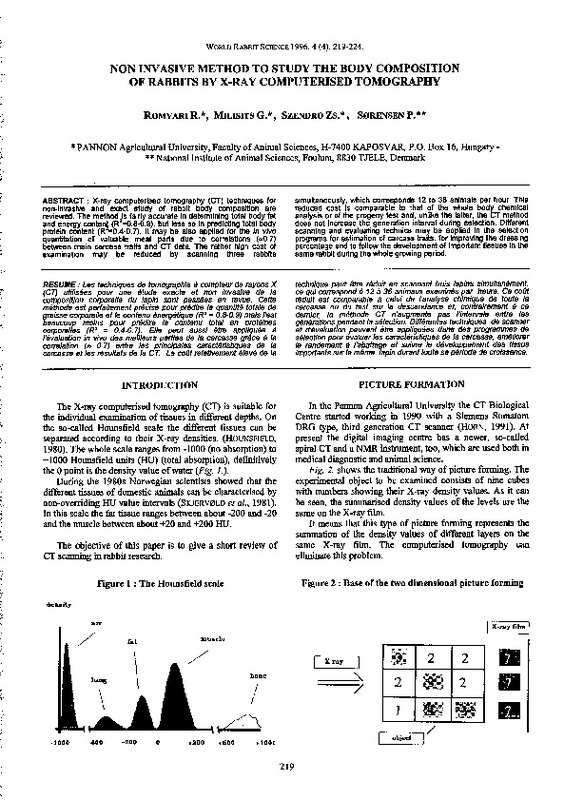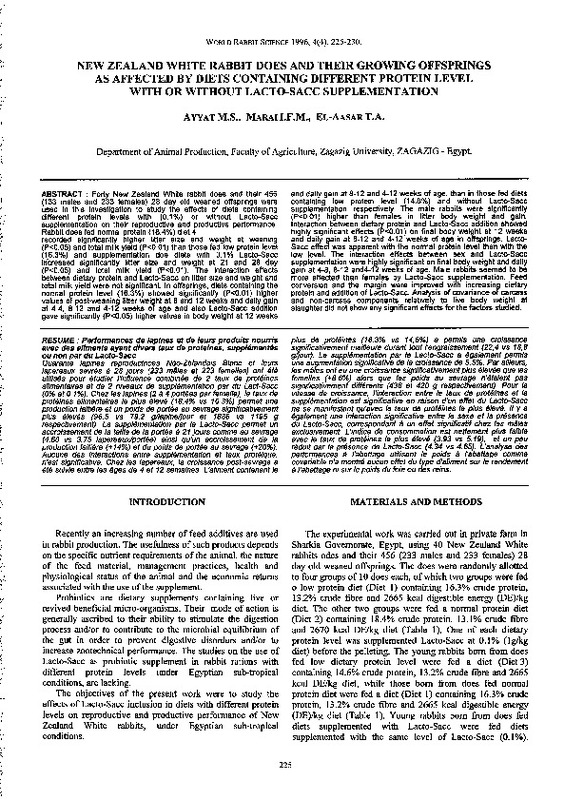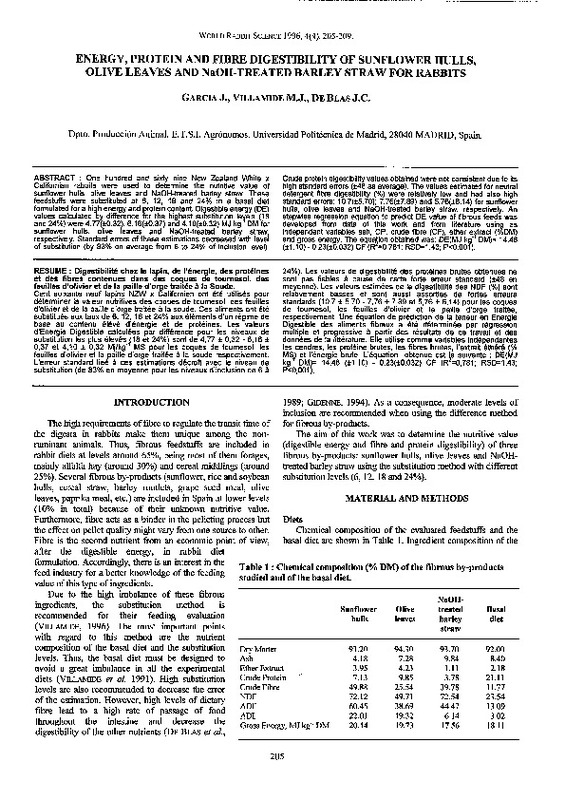- RiuNet repositorio UPV
- :
- Investigación
- :
- Material investigación. Editorial UPV
- :
- Revistas UPV. Editorial UPV
- :
- World Rabbit Science
- :
- World Rabbit Science - Vol. 04 (4)-1996
JavaScript is disabled for your browser. Some features of this site may not work without it.
Refinar
World Rabbit Science - Vol. 04 (4)-1996
Tabla de contenidos
- CARACTÉRISTIQUES HISTOCHIMIQUES DU MUSCLE ET pH DE LA VIANDE DE LAPINS HYBRIDES SACRIFIÉS À DIFFÉRENTS ÂGES
- EFFECT OF THE GENOTYPE, DAY LENGTH, SEASON AND PHYSIOLOGYCAL STAGE ON THE REPRODUCTIVE PERFORMANCE OF DOE RABBITS REARED IN GUADELOUPE (F.W.I.)
- ADDITION OF PROBIOTIC TO FEEDS WITH DIFFERENT ENERGY AND ADF CONTENT IN RABBITS. 1. EFFECT ON THE DIGESTIVE ORGANS
- ADDITION OF PROBIOTIC TO FEEDS WITH DIFFERENT ENERGY AND ADF CONTENT IN RABBITS. 2. EFFECT ON MICROBIAL METABOLISM IN THE CAECUM.
- STUDY OF AN ARTIFICIAL VAGINA TO REDUCE THE MICROBIAL CONTAMINATION OF RABBIT SEMEN
- ENERGY, PROTEIN AND FIBRE DIGESTIBILITY OF SUNFLOWER HULLS, OLIVE LEAVES AND NaOH-TREATED BARLEY STRAW FOR RABBITS
- HARMONIZATION OF MUSCLE AND MEAT CRITERIA IN RABBIT MEAT RESEARCH
- NON INVASIVE METHOD TO STUDY THE BODY COMPOSITION OF RABBITS BY X-RAY COMPUTERISED TOMOGRAPHY
- NEW ZEALAND WHITE RABBIT DOES AND THEIR GROWING OFFSPRINGS AS AFFECTED BY DIETS CONTAINING DIFFERENT PROTEIN LEVEL WITH OR WITHOUT LACTO-SACC SUPPLEMENTATION.









